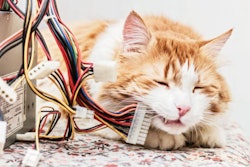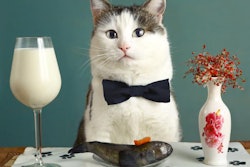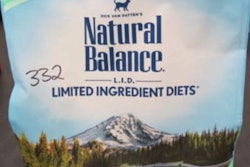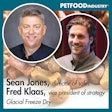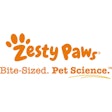
"As for humans, God tests them so that they may see that they are like the animals. Surely the fate of human beings is like that of the animals; the same fate awaits them both: As one dies, so dies the other.” Ecclesiastes 3: 18-19 NIV
The COVID-19 pandemic echoes those ancient words from Jewish and Christian scriptures. While the precise route remains unclear, wildlife likely harbored the original source of the SARS-CoV-2 coronavirus. COVID-19 was not the first disease to jump that fence. From the bubonic plague to leprosy, zoonotic diseases have ravaged Homo sapiens since prehistory. The sword cuts both ways, and human diseases can pass to other animals as well. While we now can observe that microorganisms cause diseases, divine intent or not, illness still tests humans and shows us that we are like the animals.
Recognizing this connection, the Centers for Disease Control, United Nations Food and Agriculture Program and other agencies collaborate in the One Health program. This initiative connects human health to that of other animals, by examining shared threats such as zoonotic diseases.
“One Health issues include everything from zoonotic diseases and antimicrobial resistance to food safety and security and that includes food for people and animals,” Tom Skinner, senior public affairs officer for the CDC told Petfood Industry. “Changes in our interactions with animals, through changes in the environment, travel and trade, and the increase in animals kept as pets, have led to the spread of existing and new zoonotic diseases.”
That interaction among people and other animals extends to our diets.
“Food systems for people, pets and livestock often overlap, and zoonotic diseases, including those caused by antimicrobial resistant pathogens, can spread to people and animals through shared environments (like farms, slaughterhouses, and transport) and food…” he said. “Outbreaks of illness linked to animals, food products, or the food production chain are best prevented and addressed through a One Health approach that includes experts from human, animal, and environmental health sectors…
“One issue we are seeing is an increase in feeding pets raw diets...,” he said. “CDC does not recommend feeding pets raw food because of the risk for diseases spreading to both animals eating the food and people handling the food. Including pet food in the overall picture of how we address zoonotic diseases and other One Health concerns is necessary.”
Pet and human food confluence
The connections among disease and human, pet and livestock foods have been established. Yet there is more to health than avoiding disease. Dietary habits and nutrition play roles in health as well. The human and pet food worlds seem to be converging. I suggest that a One Food concept could embrace this confluence.
However, dietary correlations among the health of humans, dogs and cats haven’t been explored as much as microbes. While some human foods can poison pets, many ingredients are shared among foods for various species. We all can eat corn, for example, despite marketing claims to the contrary. Corn provides a good example of how human culture influences pet nutrition.
Corn, either a gift from Aztec god Quetzalcoatl, a triumph of Indigenous agriculture or both, provides pets and people with essential amino acids, carbohydrates and other nutrients. Corn became nearly ubiquitous in post-World War II processed foods, as excess nitrogen from munitions plants was turned into fertilizer for green plants. The success of corn may have led to its eventual rejection, as people realized the problems of ultra-sweet, inexpensive corn products for human diets, along with issues of fertilizer runoff pollution, habitat loss, rural social inequalities and other issues. While intensive agriculture and processed foods may have detractors, the corn baby was thrown out with the bath water. Following human trends, and seeking to differentiate themselves in the market, pet food brands began marketing their products as not containing corn, along with no soy, rice and other conventional ingredients.
The humanization of pet food means that no-corn, ketogenic, vegan, gluten-free and other diets will continue to move into cat and dog foods and treats. What’s more human foods and pet foods increasingly resemble each other in ingredients, appearance and marketing. The human and pet food streams are already converged, with many ingredients appearing in both. Capitalizing on this, Nestle Purina released a cookbook for humans, inspired by a new line of cat recipes, Fancy Feast Petite Feasts.
The convergence of human and pet foods may lead to the development of a One Food model in which as one diets, so diets the other.
This is the second in a series of blogs that will examine the convergence of the pet and human food industries.



